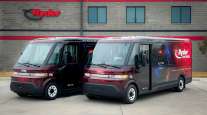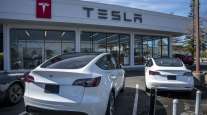Chairman, American Truck Dealers
Driving Green Trucks Ahead at the Right Speed

[Stay on top of transportation news: Get TTNews in your inbox.]
Truck dealers are all-in on electric commercial motor vehicles and want cleaner, greener, and safer trucks on our roadways. We’re doing our part to be ready for the coming electrification of commercial fleets.
However, we also understand that fleet owners have major factors to weigh when considering an investment in electric or alternative-powered vehicles. Medium- and heavy-duty truck dealers like me sell vehicles to businesses, and the ultimate question our customers ask is whether these vehicles can meet their needs and expectations. Commercial customers will adopt electric vehicles when the investment makes sense for them financially.
Against this background, it is troubling that the government is pushing the regulation of fleet electrification in a way that could slow down rather than accelerate electric adoption by truck customers.
An example of this flawed push to regulate is the Environmental Protection Agency’s new proposal targeting fleetwide greenhouse gas reductions for heavy-duty vehicles for model years 2027-2032. While the proposed rule does not dictate the alternative technologies OEMs must use, it does mandate aggressive targets that will force the industry toward electrification regardless of whether the necessary charging infrastructure is there, or if America’s commercial fleets are ready to buy.

McCandless
In the U.S. today, fewer than 1% of new commercial vehicle sales are zero-emission vehicles, but EPA’s proposal aims to bring large numbers of battery, plug-in hybrid and fuel cell vehicles to the market by setting extremely aggressive targets in their new GHG Phase 3 rule.
To get these trucks on America’s roads, fleets must first purchase the vehicles and put them in service, even though affordability of these trucks is an issue. Looking at this through the lens of a potential purchaser, a Class 8 electric truck costs roughly three times as much as a traditional internal combustion engine truck; at the same time, while a ZEV can go up to 330 miles per charging, a diesel has the ability to travel 1,500 miles before needing to refuel. It’s not hard to do the math; the price and range simply don’t “pencil out” for fleet operators.
Furthermore, commercial vehicles must be reliable and affordable. Prospective customers will avoid the unknowns related to EV downtime, because trucks that don’t move don’t make money. These trucks must be affordable and reliable to succeed in the marketplace.
Charging infrastructure also poses a serious challenge to adoption. Dealers are doing their part by investing millions of dollars in the infrastructure, training, and equipment to sell and service electric heavy-duty trucks. However, EPA’s proposed rule ignores that fleet owners need sufficient public charging and refueling infrastructure. Alternative charging and fueling infrastructure must be in place to spur customer adoption.
Reducing emissions requires more than just setting new standards. The EPA must provide adequate lead times across all market segments to decrease the cost of innovative technologies, and allow customers and governments to make critical infrastructure investments. Additionally, more federal, state and local incentives will help drive customer demand. Repealing the federal excise tax on all heavy-duty trucks would be a good place to start.
At the Advanced Clean Transportation Expo in May, Daimler Truck North America President and CEO John O’Leary said it best: We need to move at the “speed of right.” Now is the time to find the right speed and path to drive cleaner greener trucks forward.
Scott McCandless is president of McCandless Truck Center in Aurora, Colo.
Want more news? Listen to today's daily briefing below or go here for more info:




